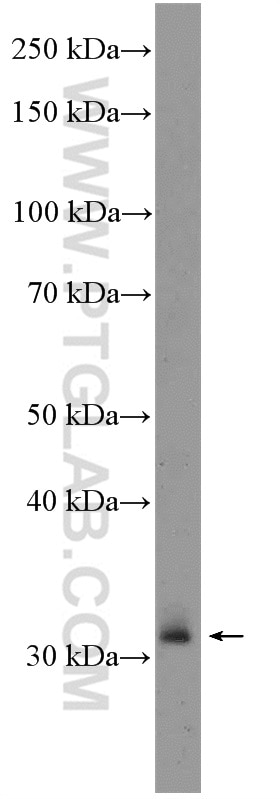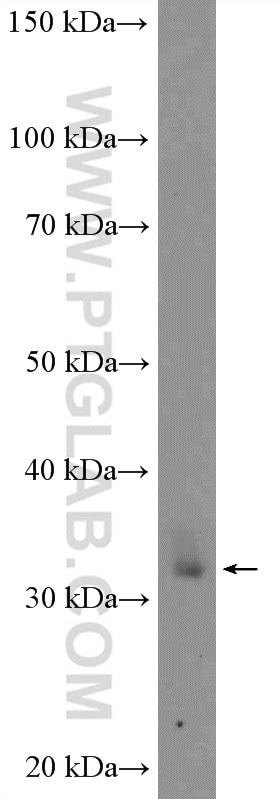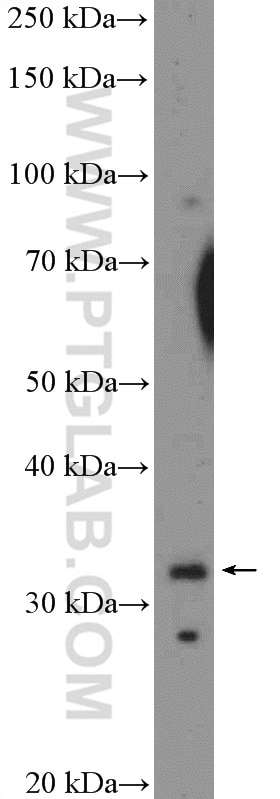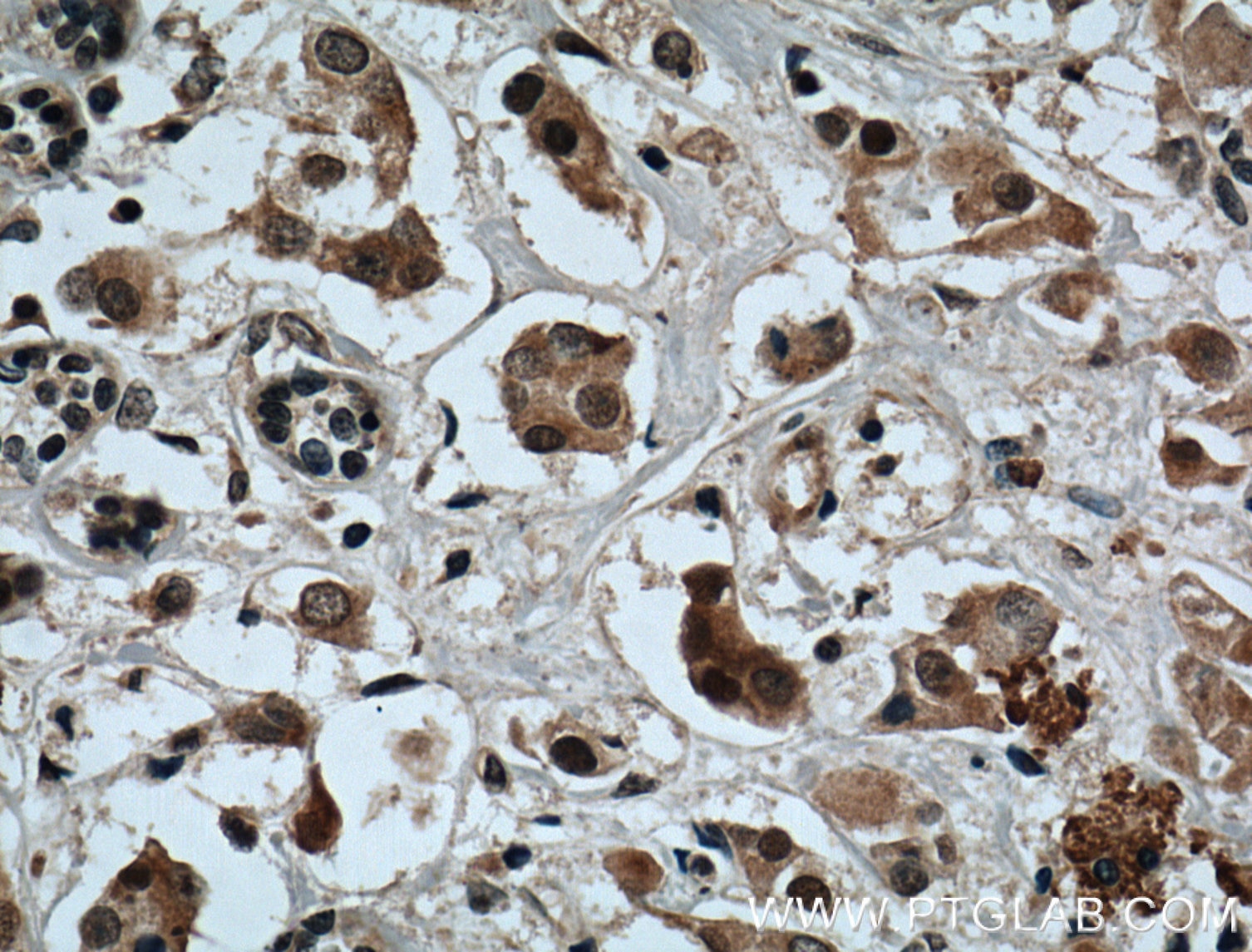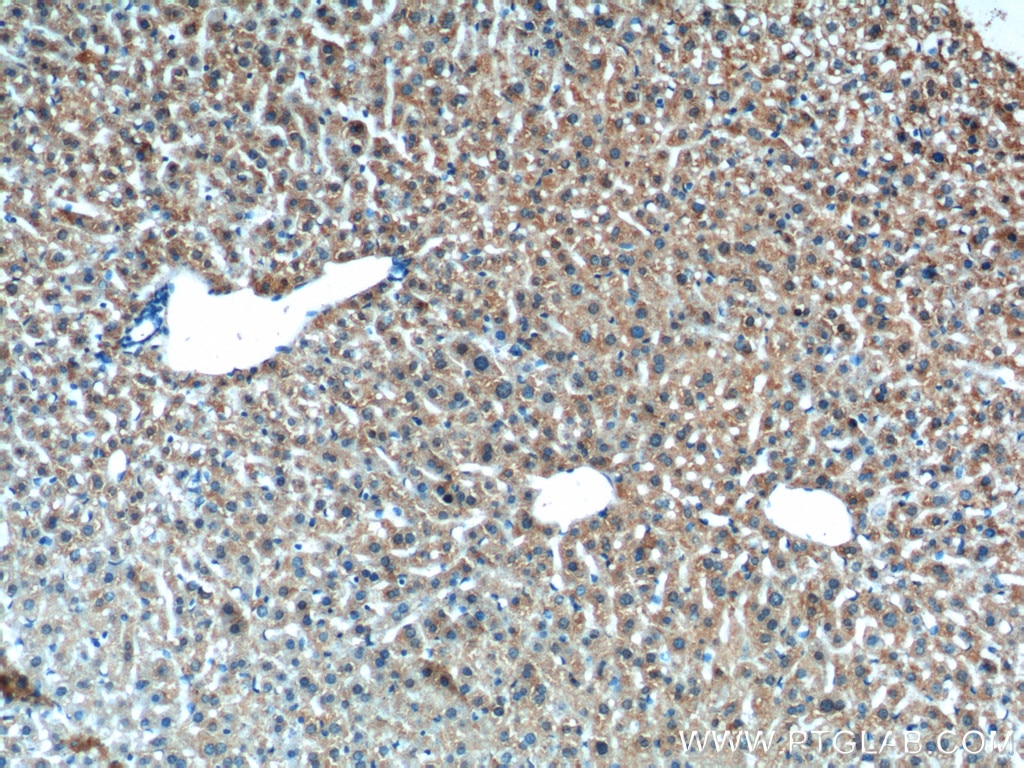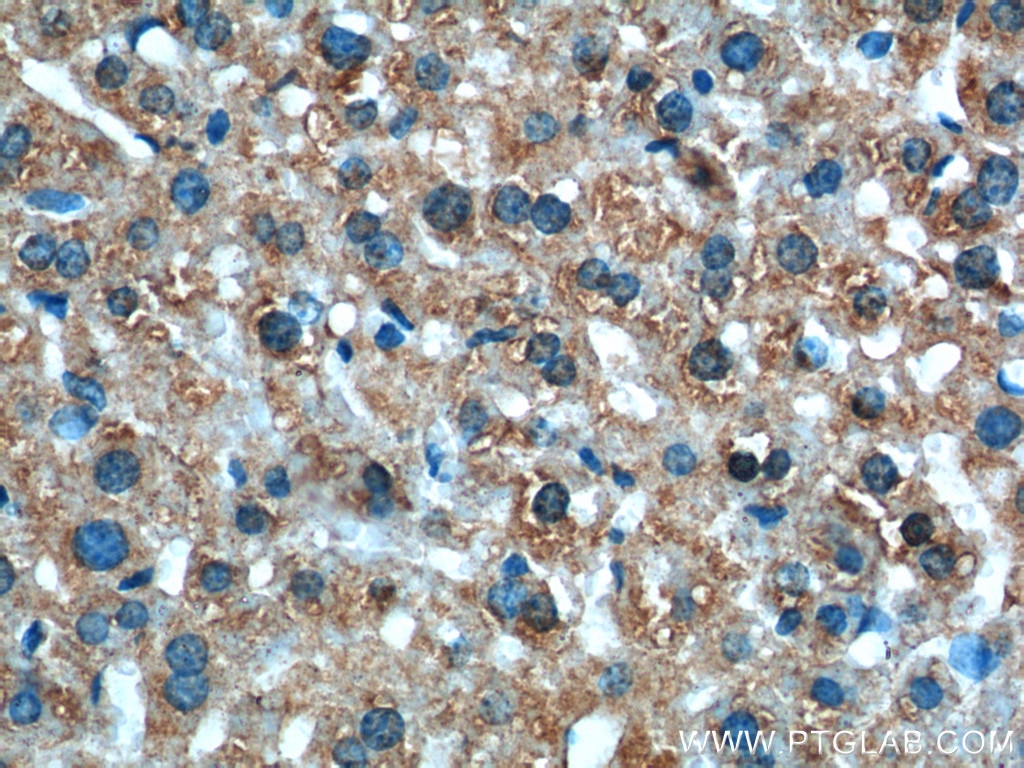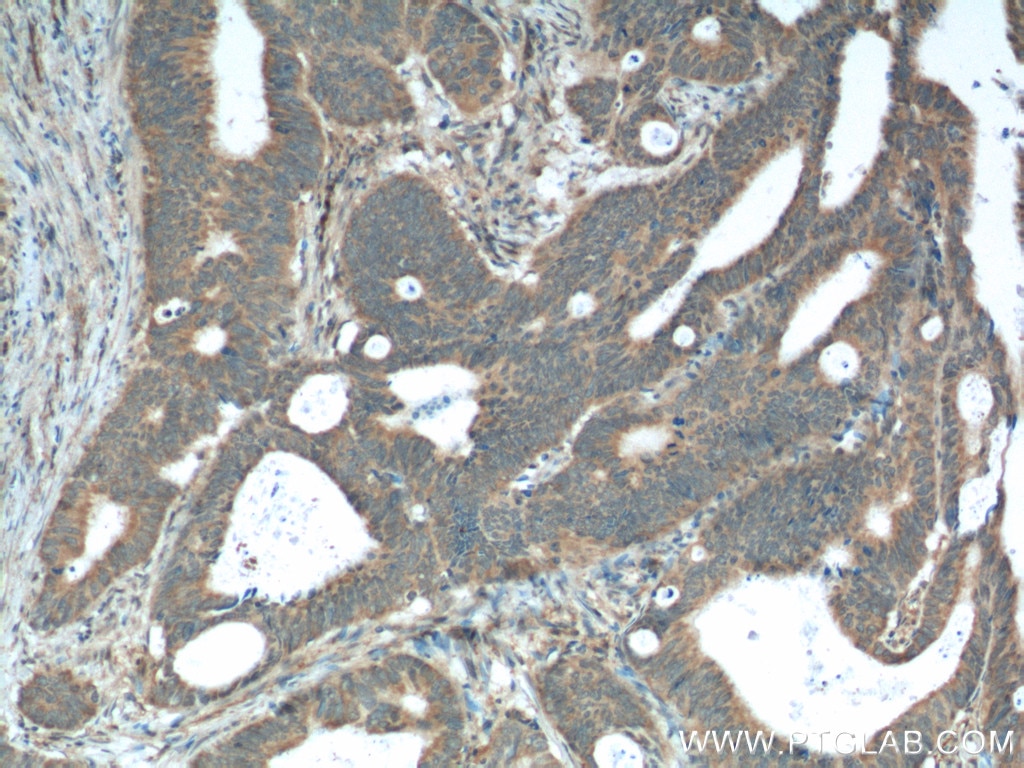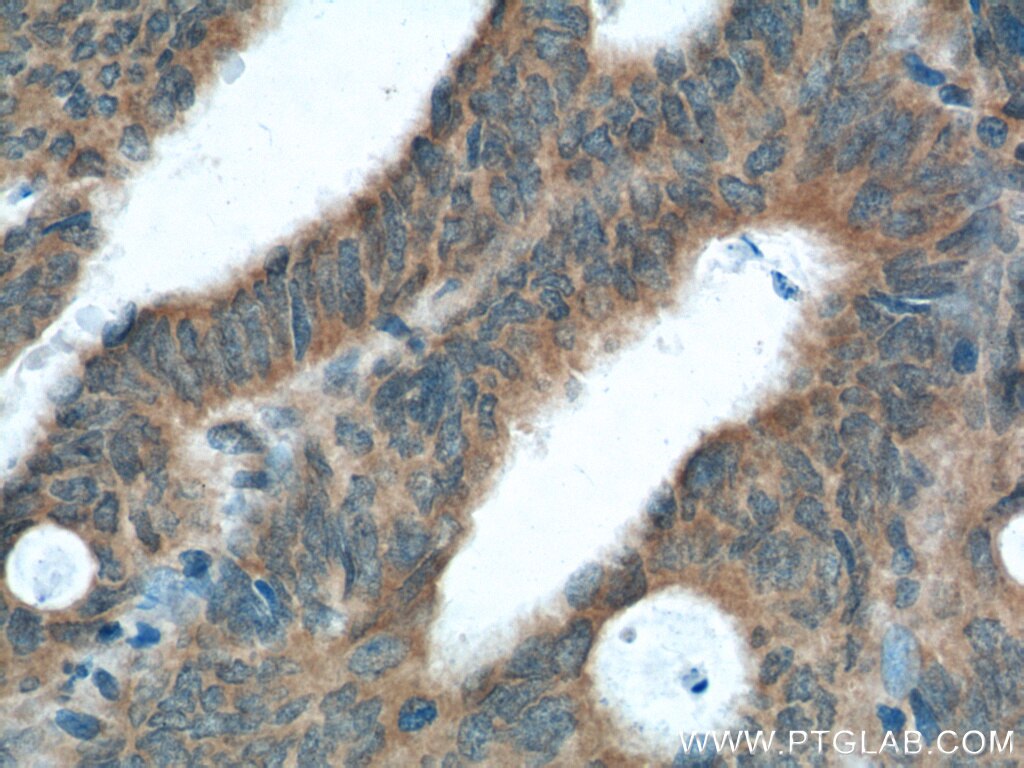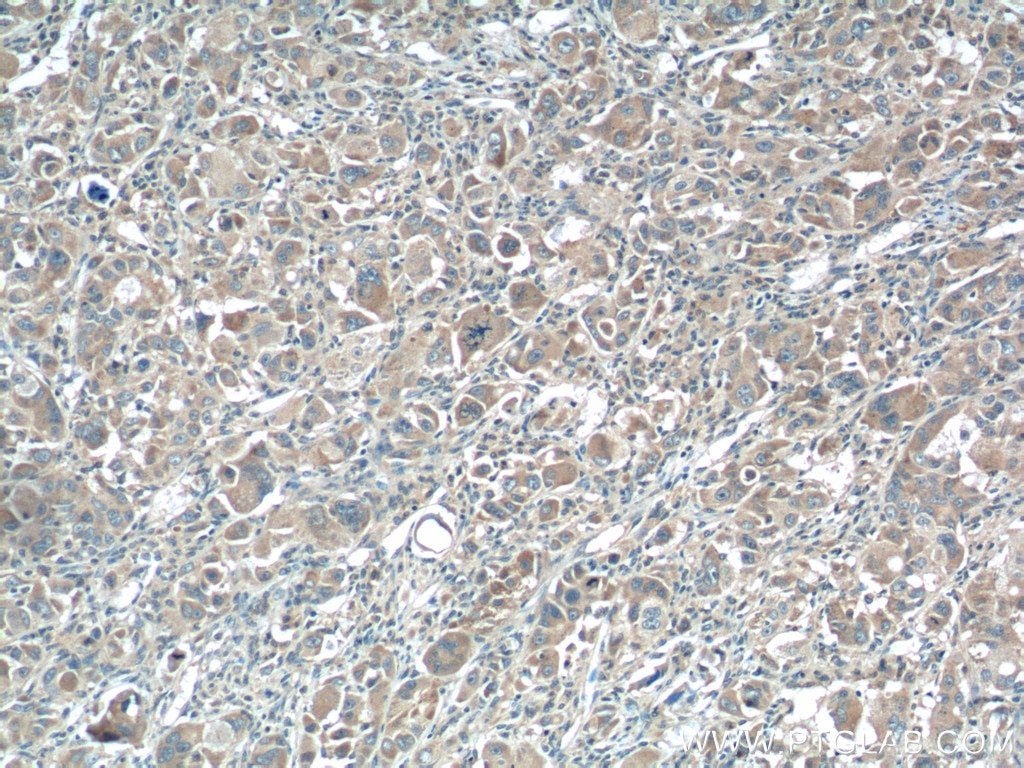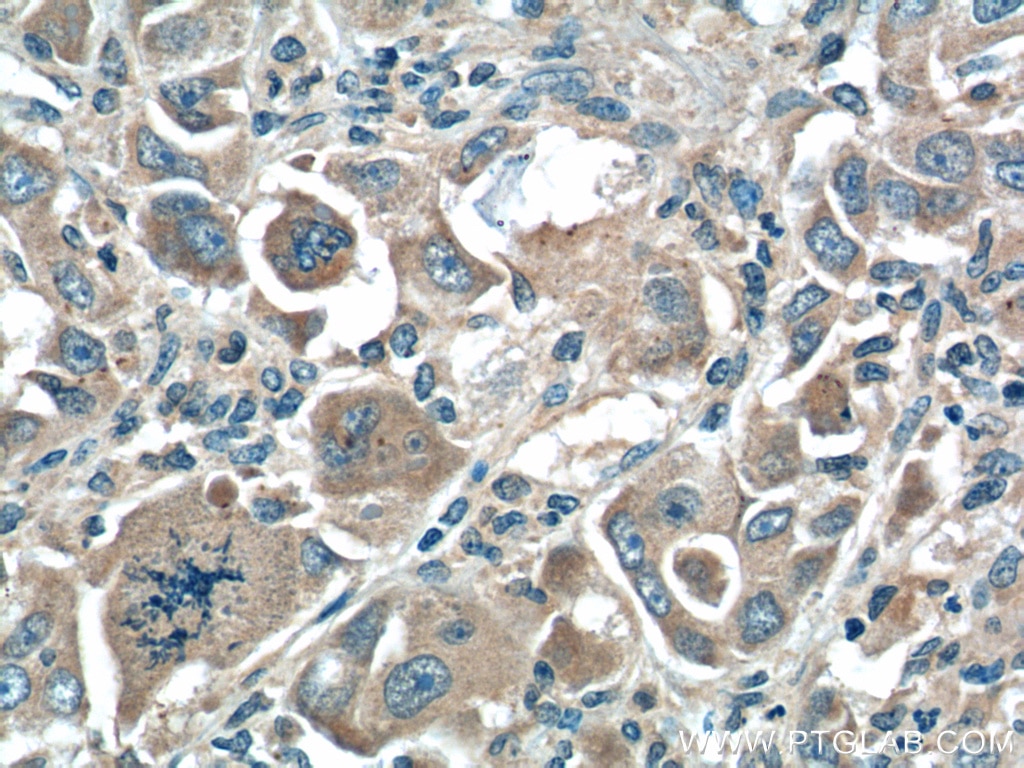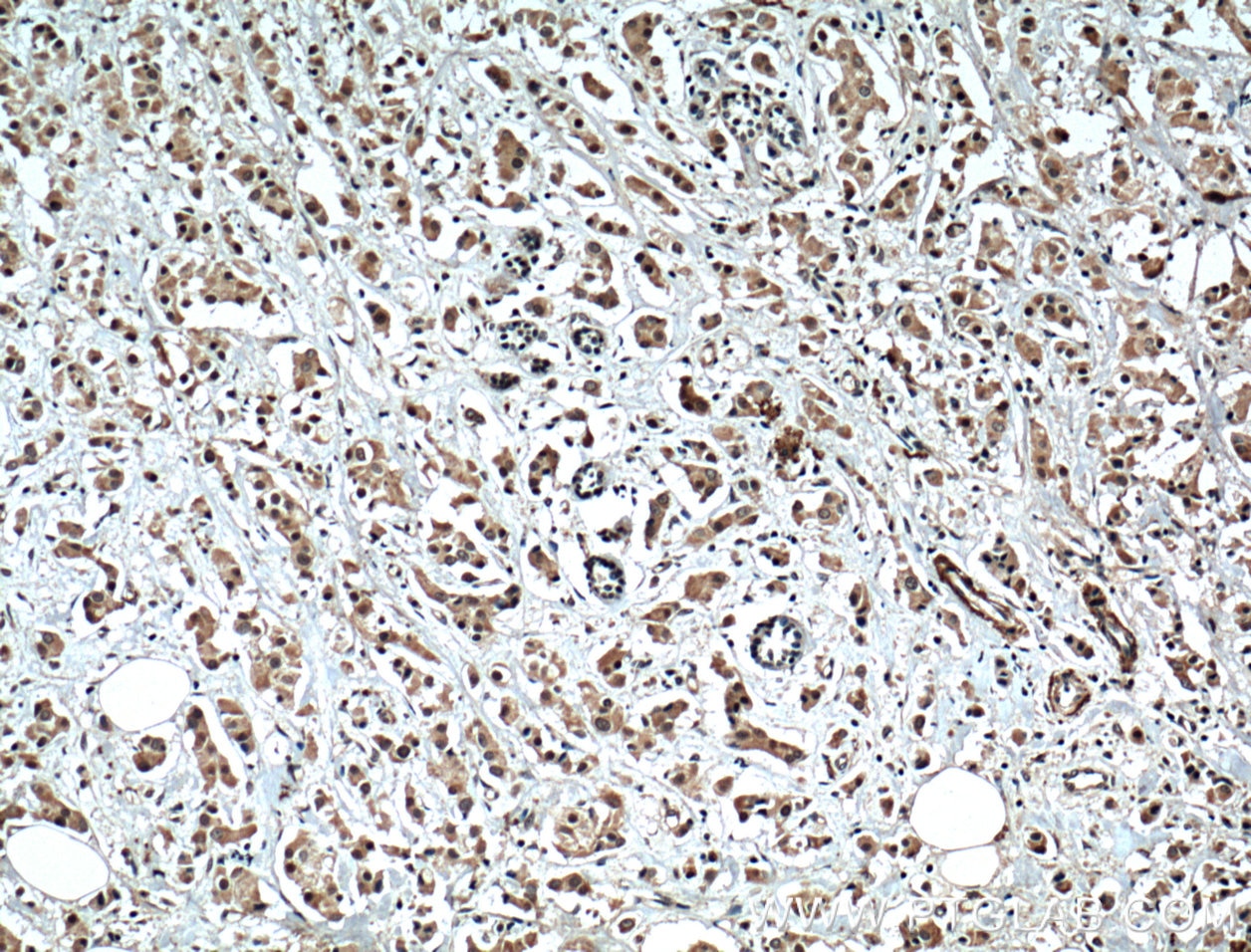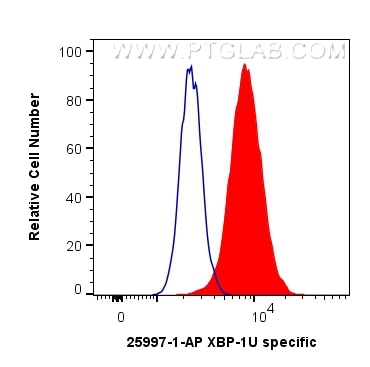- Phare
- Validé par KD/KO
Anticorps Polyclonal de lapin anti-XBP-1U specific
XBP-1U specific Polyclonal Antibody for FC, IHC, WB, ELISA
Hôte / Isotype
Lapin / IgG
Réactivité testée
Humain, rat, souris et plus (1)
Applications
WB, IHC, IF, FC, ELISA
Conjugaison
Non conjugué
N° de cat : 25997-1-AP
Synonymes
Galerie de données de validation
Applications testées
| Résultats positifs en WB | tissu splénique de rat, tissu splénique de souris |
| Résultats positifs en IHC | tissu de cancer du sein humain, tissu de cancer du côlon humain, tissu de cancer du foie humain, tissu hépatique de souris il est suggéré de démasquer l'antigène avec un tampon de TE buffer pH 9.0; (*) À défaut, 'le démasquage de l'antigène peut être 'effectué avec un tampon citrate pH 6,0. |
| Résultats positifs en cytométrie | cellules HepG2, |
Dilution recommandée
| Application | Dilution |
|---|---|
| Western Blot (WB) | WB : 1:200-1:1000 |
| Immunohistochimie (IHC) | IHC : 1:50-1:500 |
| Flow Cytometry (FC) | FC : 0.40 ug per 10^6 cells in a 100 µl suspension |
| It is recommended that this reagent should be titrated in each testing system to obtain optimal results. | |
| Sample-dependent, check data in validation data gallery | |
Applications publiées
| KD/KO | See 1 publications below |
| WB | See 40 publications below |
| IHC | See 5 publications below |
| IF | See 2 publications below |
Informations sur le produit
25997-1-AP cible XBP-1U specific dans les applications de WB, IHC, IF, FC, ELISA et montre une réactivité avec des échantillons Humain, rat, souris
| Réactivité | Humain, rat, souris |
| Réactivité citée | rat, Humain, porc, souris |
| Hôte / Isotype | Lapin / IgG |
| Clonalité | Polyclonal |
| Type | Anticorps |
| Immunogène | XBP-1U specific Protéine recombinante Ag21714 |
| Nom complet | X-box binding protein 1 |
| Masse moléculaire calculée | 261 aa, 29 kDa |
| Poids moléculaire observé | 32 kDa |
| Numéro d’acquisition GenBank | BC000938 |
| Symbole du gène | XBP1 |
| Identification du gène (NCBI) | 7494 |
| Conjugaison | Non conjugué |
| Forme | Liquide |
| Méthode de purification | Purification par affinité contre l'antigène |
| Tampon de stockage | PBS avec azoture de sodium à 0,02 % et glycérol à 50 % pH 7,3 |
| Conditions de stockage | Stocker à -20°C. Stable pendant un an après l'expédition. L'aliquotage n'est pas nécessaire pour le stockage à -20oC Les 20ul contiennent 0,1% de BSA. |
Informations générales
X-box-binding protein 1 (XBP1), also named as TREB5, is a 261 amino acid protein, which contains one bZIP domain and belongs to the bZIP family. XBP1 localizes in the nucleus and as a transcription factor is essential for hepatocyte growth, the differentiation of plasma cells, the immunoglobulin secretion, and the unfolded protein response. XBP1 has an association with major affective disorder. The molecular weight of protein generated from the spliced XBP1 mRNA is 54 kDa and protein generated from unspliced Xbp1 mRNA is 33 kDa. This antibody 25997-1-AP specially recognizes isoform XBP-1U.
Protocole
| Product Specific Protocols | |
|---|---|
| WB protocol for XBP-1U specific antibody 25997-1-AP | Download protocol |
| IHC protocol for XBP-1U specific antibody 25997-1-AP | Download protocol |
| Standard Protocols | |
|---|---|
| Click here to view our Standard Protocols |
Publications
| Species | Application | Title |
|---|---|---|
J Extracell Vesicles A multi-omics approach identifies pancreatic cancer cell extracellular vesicles as mediators of the unfolded protein response in normal pancreatic epithelial cells. | ||
Hepatology Farnesoid X receptor signaling activates the hepatic X-box binding protein 1 pathway in vitro and in mice. | ||
Sci Adv Identification of XBP1-u as a novel regulator of the MDM2/p53 axis using an shRNA library. | ||
Acta Pharm Sin B The substitution of SERCA2 redox cysteine 674 promotes pulmonary vascular remodeling by activating IRE1α/XBP1s pathway. | ||
Autophagy Inhibition of USP14 influences alphaherpesvirus proliferation by degrading viral VP16 protein via ER stress-triggered selective autophagy. | ||
Oncogene Knockdown of TM9SF4 boosts ER stress to trigger cell death of chemoresistant breast cancer cells. |
